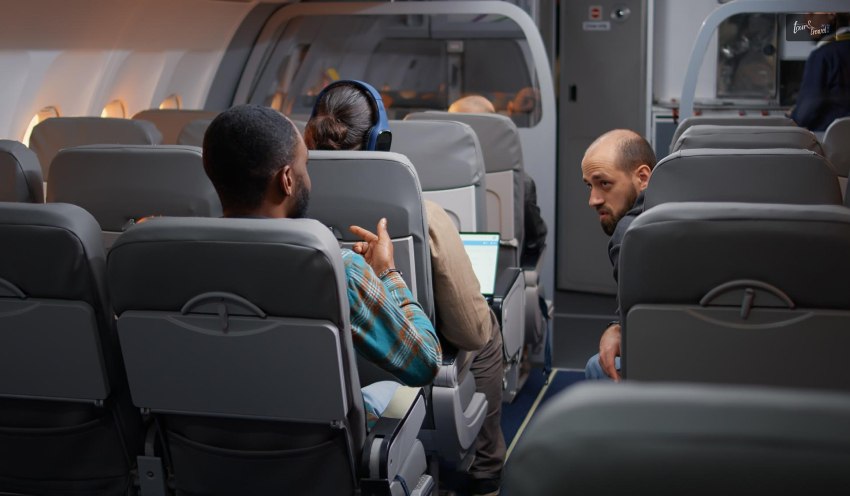How To Prepare For Etias?: A Guideline For Business Travellers
BY Sibashree Jan 15, 2025
Staying ahead of new travel requirements is essential for business travelers to ensure seamless international mobility. Let's find outHow To Prepare For Etias? With the introduction of ETIAS travel authorization on Etiaseu, preparing for your trips to Europe has never been more important. This digital system strengthens border security and streamlines the process for legitimate travelers. Understanding how ETIAS and corporate mobility intersect is key to avoiding disruptions and maintaining efficiency in your business operations. It's understanding application requirements or planning for multiple trips; this guideline provides the essential steps you need to take to navigate the new landscape confidently. Understanding ETIAS and corporate mobility: a new era of business travel In today's interconnected global economy, efficient cross-border movement has become a cornerstone of successful business operations. The relationship between ETIAS and corporate mobility is reshaping how companies approach international travel. The introduction of the European Travel Information and Authorization System (ETIAS) marks a significant milestone in corporate travel management, thanks to Etiaseu. As businesses expand their international footprint, the need for streamlined travel authorization processes has never been more critical. This new system represents a fundamental shift in how corporations manage employee mobility, offering a balance between enhanced security measures and operational efficiency. For multinational companies, implementing ETIAS signals not just a regulatory change but an opportunity to modernize their approach to international business travel. The system's digital-first approach aligns perfectly with the current trajectory of corporate digitalization, providing organizations with tools to manage employee movement across borders more effectively than before. What is ETIAS and How It Impacts Business Operations? The corporate world is witnessing a fundamental shift in international travel protocols with the implementation of ETIAS. This sophisticated pre-screening system introduces a new layer of security while streamlining business travel to the Schengen Area. For multinational corporations, this means adapting their mobility strategies to incorporate automated authorization processes that facilitate seamless employee movement. Key operational impacts include: ● Reformed travel planning timelines ● Digital integration requirements ● Enhanced compliance tracking ● Automated authorization management ● Streamlined documentation processes Key ETIAS Requirements for Corporate Travelers The intersection of ETIAS and corporate mobility creates new requirements for business travelers entering the Schengen Area. According to recent corporate mobility trends, the system introduces standardized protocols requiring precise documentation and careful planning. Understanding these requirements is crucial for maintaining efficient business operations across borders. Essential requirements include: ● Valid business passport with minimum six-month validity; ● Corporate travel documentation; ● Proof of business purpose; ● Company authorization letters; ● Financial guarantee documentation; ● Return travel confirmations. ETIAS application process: a step-by-step corporate guide Modern corporations must develop a systematic ETIAS and corporate mobility management approach, ensuring consistent compliance across all business units. Successful implementation depends on creating standardized procedures that can be replicated in different departments and regions, maintaining operational efficiency. The process encompasses: Step 1: Confirm Your Eligibility Step 2: Gather Required Documents Step 3: Access the Official ETIAS Portal Step 4: Fill in Your Personal Information Step 5: Add Travel and Health Information CategoryPossible QuestionsHealthHave you been diagnosed with any serious infectious diseases in the past 5 years?Are you currently receiving treatment for any condition that may pose a public health risk?Have you been hospitalized for a contagious disease in the last 12 months?Do you have a medical condition that requires special attention during your stay in the Schengen Area?TravelHave you visited any conflict zones or countries affected by war in the last 10 years? Have you been deported or refused entry from any country within the past 5 years?Have you overstayed a visa in any country in the past 5 years? Have you previously been denied a visa to any Schengen Area country?Criminal RecordHave you ever been convicted of a serious crime, including terrorism, human trafficking, or drug smuggling?Are you currently under investigation for any criminal offense in your home country or terrorism?Have you ever been involved in any activities related to organized crime or terrorism? Have you been convicted of a crime involving violence or sexual misconduct in the past 10 years? Step 6: Review and Submit Your Application Step 7: Pay the ETIAS Fees Step 8: Track Your Application Status Training and preparation for corporate travel teams The evolution of ETIAS and corporate mobility demands comprehensive training programs for corporate travel managers and support staff. Organizations develop robust systems that ensure consistent compliance while maintaining operational efficiency in this new era of business travel. Implementation strategies should focus on: ● Digital literacy enhancement; ● Compliance protocol training; ● Documentation management systems; ● Emergency response procedures; ● Regular policy updates; ● Performance monitoring metrics. What To Do After ETIAS Approval? Once your approval of ETIAS comes through, the validity stays on for three years until your passport expires, or whichever happens before. With each ETIAS, you can use it for multiple trips, as long as the trips don’t exceed over 90 days and also within a 180 day period. Steps After ETIAS ApprovalActionCheck ETIAS validity ETIAS is valid for 3 years, or until your passport expires, whichever comes first. Ensure passport is linked to ETIAS Verify that your ETIAS is linked to the passport used during the application. Update ETIAS if personal information changesInform authorities of name changes or passport renewals to update ETIAS. Carry the correct passport during travelAlways travel with the same passport you used to apply for ETIAS. Be aware of the 90/180-day rule during staysEnsure you don’t exceed 90 days in a 180-day period during your visits. Renew ETIAS when necessaryApply for a new ETIAS when the current one expires, or your passport is renewed. Wrapping Up! This new era of corporate mobility requires a balanced approach between regulatory compliance and operational efficiency. Embracing ETIAS as an opportunity for modernization, businesses can transform their travel management systems while ensuring seamless international operations. Read More: Why Include Whale Watching In Your LA Itinerary Ultimate Guide to Your Next Family Vacation in Israel Traveling On A Budget: Tips For Affordable Adventures

















